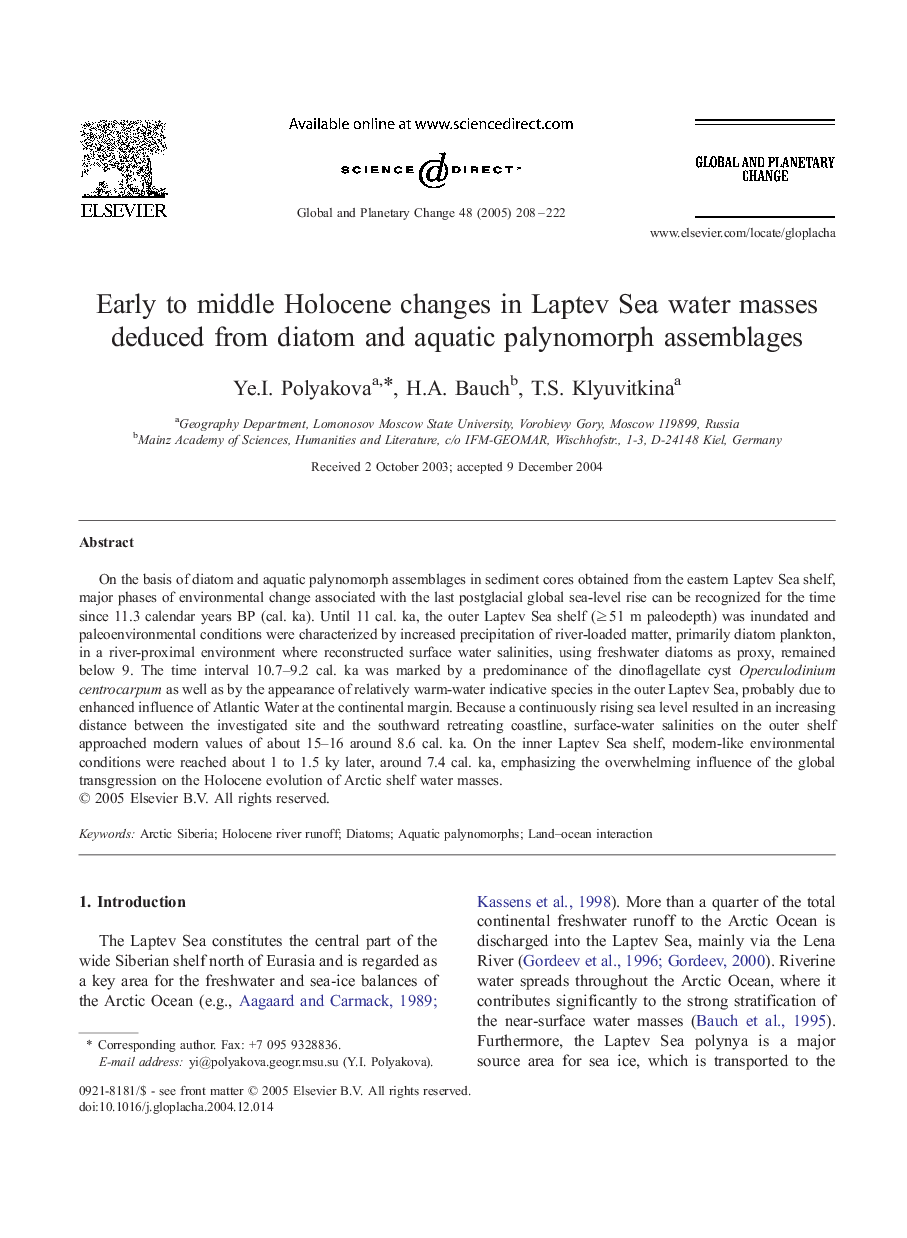| Article ID | Journal | Published Year | Pages | File Type |
|---|---|---|---|---|
| 9462545 | Global and Planetary Change | 2005 | 15 Pages |
Abstract
On the basis of diatom and aquatic palynomorph assemblages in sediment cores obtained from the eastern Laptev Sea shelf, major phases of environmental change associated with the last postglacial global sea-level rise can be recognized for the time since 11.3 calendar years BP (cal. ka). Until 11 cal. ka, the outer Laptev Sea shelf (â¥Â 51 m paleodepth) was inundated and paleoenvironmental conditions were characterized by increased precipitation of river-loaded matter, primarily diatom plankton, in a river-proximal environment where reconstructed surface water salinities, using freshwater diatoms as proxy, remained below 9. The time interval 10.7-9.2 cal. ka was marked by a predominance of the dinoflagellate cyst Operculodinium centrocarpum as well as by the appearance of relatively warm-water indicative species in the outer Laptev Sea, probably due to enhanced influence of Atlantic Water at the continental margin. Because a continuously rising sea level resulted in an increasing distance between the investigated site and the southward retreating coastline, surface-water salinities on the outer shelf approached modern values of about 15-16 around 8.6 cal. ka. On the inner Laptev Sea shelf, modern-like environmental conditions were reached about 1 to 1.5 ky later, around 7.4 cal. ka, emphasizing the overwhelming influence of the global transgression on the Holocene evolution of Arctic shelf water masses.
Keywords
Related Topics
Physical Sciences and Engineering
Earth and Planetary Sciences
Earth-Surface Processes
Authors
Ye.I. Polyakova, H.A. Bauch, T.S. Klyuvitkina,
